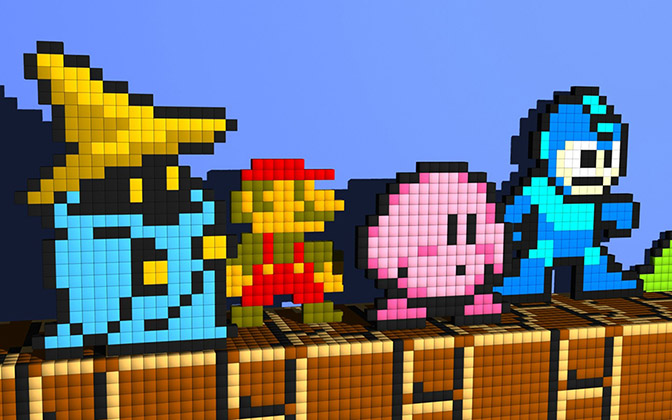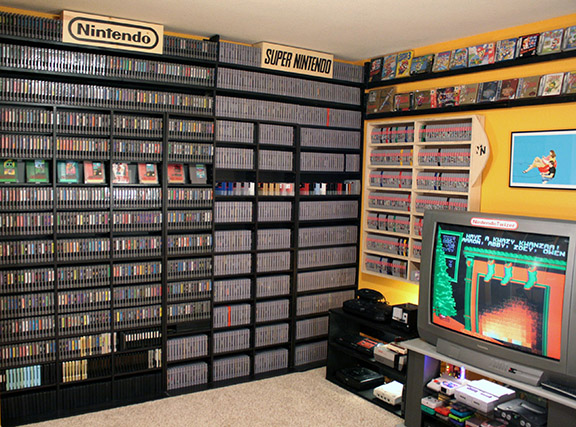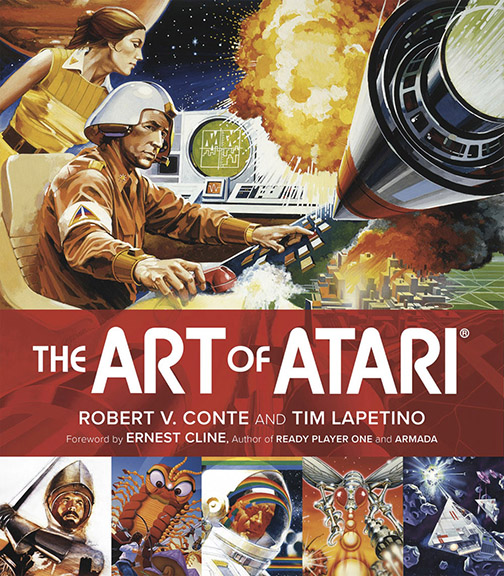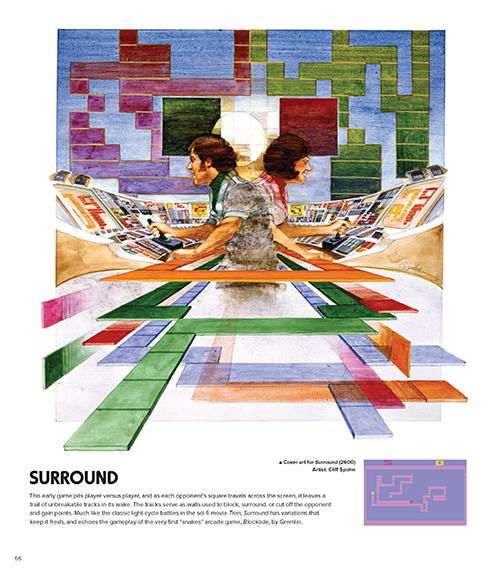Square pixels of pure color coupled with the layering of top-down or side-scrolling interactions are sometimes the most puzzling of activities. In my youth, the Atari 2600 enveloped my mind and time. There are memories of my brothers and me sneaking downstairs, turning the rabbit-ear TV on, adjusting the sound so that it could only be heard in close quarters, and playing deep into the night. Activision’s Pitfall was our game. It was 1982, and we had discovered adventure we could actually interact with in a format not previously encountered. This nascent form of play sparked the building of obstacle courses in the meadow behind our home on Edgewood Avenue along the creek where we were forbidden to play. Recently, I revisited our naughty youthful activities in memory as I replayed some early classic games. And, in thought I began surveying our visual culture and noticing a curious trend and mounting interest in the form, style and theory of 8-64 bit aesthetics.

8-bit art of icons in video gaming: Vivi Ornitier, Super Mario, Kirby, and Mega Man.
The aesthetics of 8-64 bit video gaming appears to have fully saturated our present digital age. In recent time, the video gaming industry has noted our fixation and capitalized on our fondness for nostalgia. Isometric and orthographic imagery can now easily be found in various disciplines of the arts. And, this sonic and visual obsession is translating into financial reward. One recent example, the NES Classic Edition with 30 pre-loaded games (Super Mario Bros., Donkey Kong, The Legend of Zelda, PAC-MAN, Metroid, Kirby’s Adventure, and a whole mess more) was gobbled up in minutes. Initially sold for $59.99, the system is now selling online for more than $200. Nintendo has indicated that additional units are shipping soon. Whether Nintendo meets the demand (in recent time, they rarely have) remains to be seen. As a collector of vintage games, I have noted that this phenomena is not isolated, and growing at an fervent rate. The passion for antiquated video gaming media can be seen through a quick look at
eBay. One will immediately realize that obscure games (often not player friendly) are fetching some serious cash.

Nintendo’s NES Classic Edition released in November 2016. The stock sold-out in minutes online!
So, what is 8-64 bit aesthetics? Where did this style originate? What impact is this artform having on our visual culture? Is this just a passing trend or does this appear to be something that may have the legs to withstand time? Rather than glossing over this fairly complex topic, my hope is to assemble a series of writings to offer a bit more depth in my understanding. And, in all honesty, fuel my ongoing preoccupation with how this artform is transforming contemporary life in mind, body and spirit.
Firstly, I am uninterested in even offering little debate to whether video gaming or related media is an art. Lets let those outdated approaches and formats of looking at and establishing something as “art” practiced in the late 19th c. rest in peace. My initial goal here is to identify the pervasiveness of the medium. In supplemental writings I plan discuss the elements that characterize the analytical and formal foundations.

Retro video gaming collection with focus on Nintendo’s NES, SNES, and N64 systems.
Video gaming’s inception is often identified as emerging in the late 1940s with the first interactive electronic display. Simple games like Spacewars! created at MIT where initially developed by computer scientists at academic institutions for research (often military-based). It was not until the the 1970s and 1980s that games and systems were mass produced and circulated to a wider public. This dissemination established a paradigm shift in our cultural milieu. Though nascent game iteration appearance was often crude, two-dimensional, and consisted of little more than squares, points, and lines with a limited color palette, a new aesthetic was being established. One based, once again, at the intersection of the arts and sciences, similar to that found at the inception of photography, that changed the manner people thought about and interacted with each other.

Cover design of Robert V. Conte and Tim Lapetino’s “Art of Atari”,
published by Dynamite Entertainment, 2016.
However, it was not until September 11, 1977 with the release of the Atari 2600 that the conceptual and formal elements of a video gaming aesthetic would fully take root. This and other early video gaming systems are now being widely revisited by the industry that created them, artists who are now rethinking their relevance, and theorists who are assembling histories and conceptual frameworks for analysis. In recent months, there have been a flurry of publications announced and released that look at the art, history and mechanics. Three with a focus upon well-known properties, The Art of Atari, Playing with Power: Nintendo NES Classics, and Nintendo 64 Anthology, offer an introduction with materials that go beyond mere gameplay.

Interior page of Tim Lapetino’s “Art of Atari”,
published by Dynamite Entertainment, 2016.
In Tim Lapetino’s excellently produced publication by Dynamite, The Art of Atari, 2016, one will find a history of Atari emphasizing the importance of the art and design created for the advertising and promotion of such early classics as Centipede, Breakout, and Adventure. Artists (Cliff Spohn, Rick Guidice, Terry Hoff, etc.) are given profiles that present their illustrations along side commentary that presents thoughts on the intent, process, and style. In the section entitled Process the focus is upon the analog approach to glamorizing the games. Having entered the design industry at a time where keylining (paste-up) and hand illustration was still commonly practiced, I found the detailed attention given to this out-of-date process worth sharing with my students. Their response was initially a blank stare…followed by amazement.

Garitt Rocha and Nick von Esmarck’s “Playing with Power: Nintendo NES Classics”, published by Prima Games, 2016.
The exterior slipcase design of Playing with Power: Nintendo NES Classics, 2016, exceeds expectations of the interior content. Produced by DK/Prima Games, the design and pacing of materials creates a chaotic and overwhelming read. The selection of interior paper looks to be budget driven. The light weight paper deadens an experience I’ve looked forward to since its announcement. Released in Japan in 1983, followed in North America in 1985, the Nintendo Entertainment System (NES) brought the seminal characters Donkey Kong, Link, and Super Mario into one’s living room. Here, the focus is upon the games. Cursory information is coupled with commentary by Shigeru Miyamoto, and notes on a range of tertiary items (e.g., peripherals). There is certainly room in the future for a more detailed study on the system often noted as the most important 8-bit innovator.

Nintendo 64 console with Math Manent’s “Nintendo 64 Anthology, released November 2016.
To mark the 20th anniversary, Matt Manent’s Nintendo 64 Anthology appears to be an encyclopedic examination of the legendary console. Scheduled for release on December 29, 2016, Manent inventories and chronicles the entire game library. With interviews with game designers Martin Hollis (GoldenEye) and Eric Caen (Superman) this highly anticipated book looks to be a cornerstone for future research.
So, with identifying noted books coupled with my acknowledgement that there is escalation in the aesthetics in video gaming culture, I intend to deepen my understanding through a series of essays and reviews that will expand upon this initial observation. I hope you will check back…
Essay by Chester Alamo-Costello


